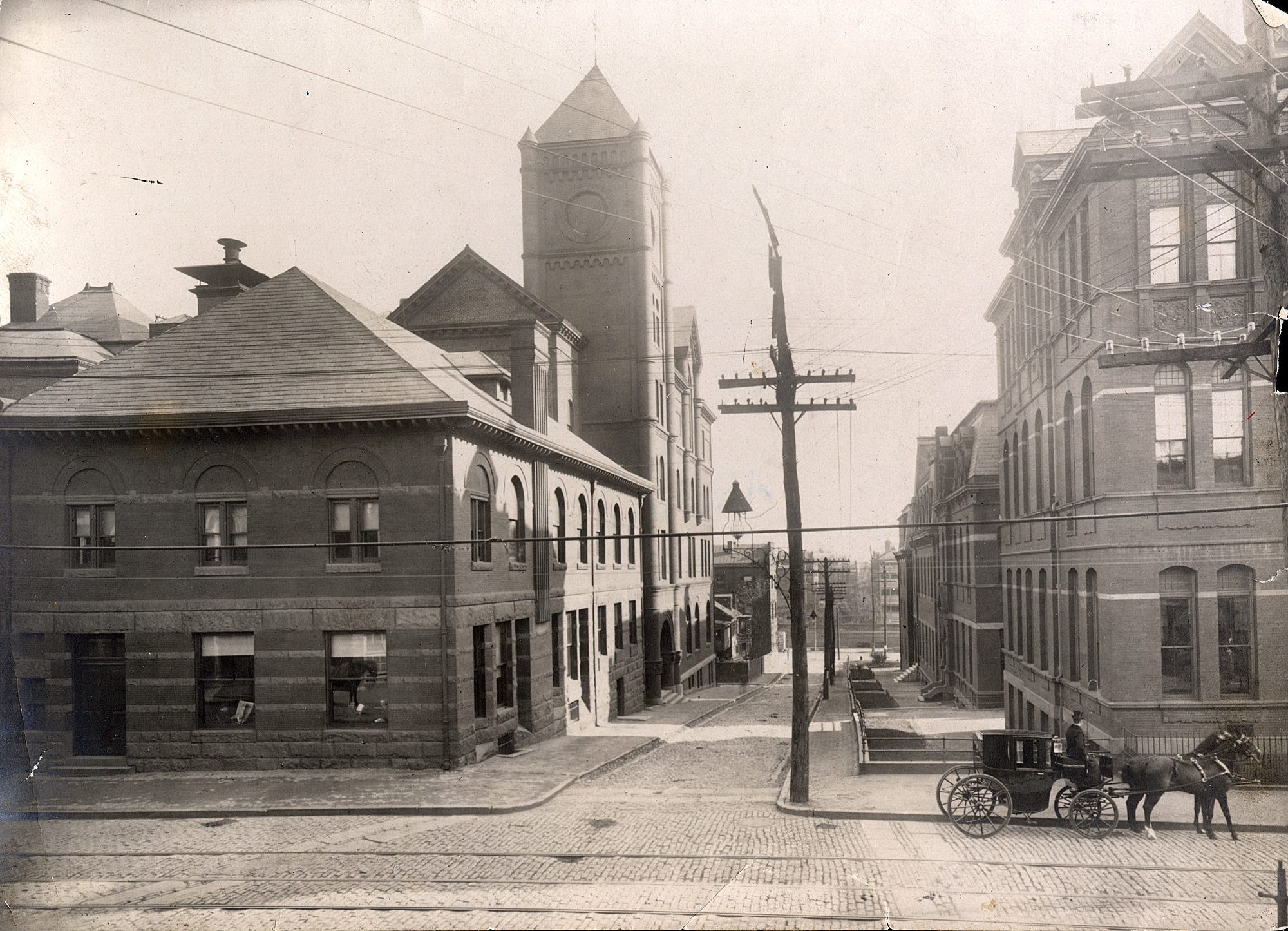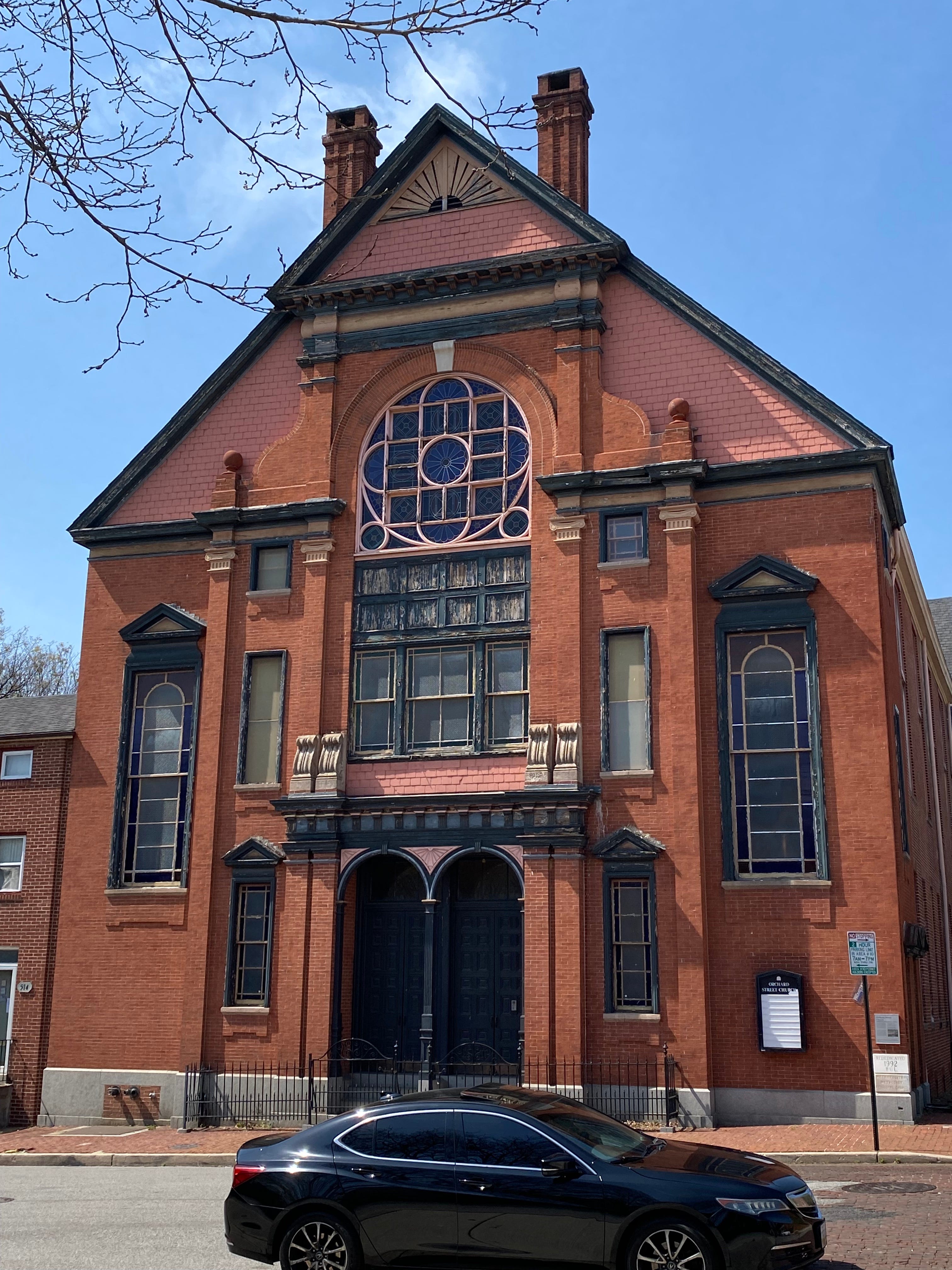“On Sabbath mornings the children attend Orchard St. school and church; in the afternoon, we have accepted the kind offer of the ladies of the church [at the] Corner [of] Madison & Biddle, to teach them there.” – Lady Managers of the Johns Hopkins Hospital Colored Orphan Asylum, 18751
In the Hard Histories Spring 2023 Research Lab, we had many conversations about space and movement in the late nineteenth and early twentieth centuries. Our research projects all dealt with movement in and around Baltimore in one way or another. Emma Petite’s work centered on the history of the “Lady Managers” of the Johns Hopkins Hospital Colored Orphan Asylum (JHH COA), some of whose family names are displayed on the JHU campus buildings we walk past every day. Kamal Kaur’s work discussed how girls residing in the JHH COA moved beyond Baltimore to secure employment after the Orphan Asylum was shut down. My own research culminated in an ArcGIS map of the girls’ movement through space in the years 1909-1914.2 All of our projects benefited from the walking tour developed by Emma Katherine Bilski — the Lab’s research and teaching assistant — which gave us a richer and more human glimpse of the girls’ lives.
We began the tour near the Maryland Center for History and Culture and walked toward the site of the original Johns Hopkins University campus, at Howard Street between Monument and Centre. Along the way, we traveled to several important sites in Black Baltimore history. Their proximity to the old university campus was a striking reminder that Hopkins was a historically restrictive university, only accepting Black undergraduate students in the mid-twentieth century.3 I liked how Emma Katherine’s inclusion of the old JHU site opened up a discussion about whether starting the tour with the old University campus site might promote an old fable about Mr. Johns Hopkins’ positive influence on Baltimore. I understood this caution, as Hard Histories at Hopkins was formed to question such overidealized notions. Still, for me, this start to the tour illustrated the complicated race and class dynamics of mid–nineteenth century Baltimore and highlighted the disparity between training girls at the Orphan Asylum for service in white households and preparing the white men attending the University for secure, prosperous futures.4

Next, we crossed the intersection of Druid Hill Avenue and Eutaw Street, and I appreciated how this added to my mental map of Baltimore and my own research project. I had only been at Hopkins for two years, so this opportunity to become more familiar with the city’s layout was welcome. I had seen photos of the old University campus, but was surprised by how densely packed the walking tour route was with historically significant landmarks relevant to the JHH COA story. Details from my own research into the asylum’s financial records became vivid. From the tour route, I could have easily walked to other sites that were important to the girls, like the office of Dr. W. F. von Schricker, where they received dental care during the later years of the Orphan Asylum.5 Walking the tour route was a peculiar experience, because while street names we passed along the way generally remained the same, over a century and a half the buildings had significantly changed.
Emma Katherine’s tour did more than help me map out the city; our journey from place to place encouraged a human-scale understanding of the JHH COA’s history. Our stops were not just points on a tour; they were an encounter with important community centers for Black Baltimoreans. The most remarkable example was our visit to the old Orchard Street Church. Seeing this towering building reinforced the importance it had for Baltimore’s Black community, and helped me to imagine how on Sunday mornings the streets around the church were once filled with churchgoers—including girls from the Orphan Asylum.

The walking tour allowed me to think of Baltimore spaces in a new way, one less focused on points on a map and instead on lives lived on historically significant streets. I appreciated Emma Katherine’s inclusion of distinct historical landmarks in her tour, but I was also inspired and moved by the physical streets we walked on. Part of my work has been to envision how girls moved through the city and the tour heightened my awareness of their presence here on the same streets a long time before us. Buildings have architectural histories and you can witness their development through photos and maps. They may even house archival materials that document their own past. In contrast, our walking tour showed me that streets can convey an equally powerful historical message if viewed through the right lens. Emma Katherine’s years of experience came through during this tour, and I only hope that more people will have the opportunity to take it and better understand the often-forgotten history of the Johns Hopkins Hospital Colored Orphan Asylum.
Matt Palmer, KSAS BA ‘23
Emma Katherine Bilski, Editor
JHH B/T Vol 1, Articles of Incorporation & June 13, 1870 to June 8 1906, Minutes of the Board of Trustees Johns Hopkins Hospital, Alan Mason Chesney Medical Archives, Baltimore, MD. Editor’s note: This church at the corner of Madison and Biddle Streets is no longer standing.
Editor’s note: We will hear more about these research projects (and this walking tour from the guide’s perspective) in upcoming Substack posts. Stay tuned and be sure to subscribe!
Katie Pearce, “Frederick Scott, who became Johns Hopkins’ first Black undergraduate student in 1945, dies at 89,” last modified July 20, 2017, https://hub.jhu.edu/2017/07/20/frederick-scott-johns-hopkins/.
“Medals for Colored Orphans: Reception at Hopkins Asylum—Work of Pupils Shown,” The Sun (Baltimore, MD), Jun. 2, 1906.
Von Schricker Dental Expense Stafford--Willinger, May 1, 1912, Collection JHHCOA, box 504411, folder 2.1.5.1912, Records of the Johns Hopkins Colored Orphan Asylum 1895-1924, Alan Mason Chesney Medical Archives, Baltimore, MD.


